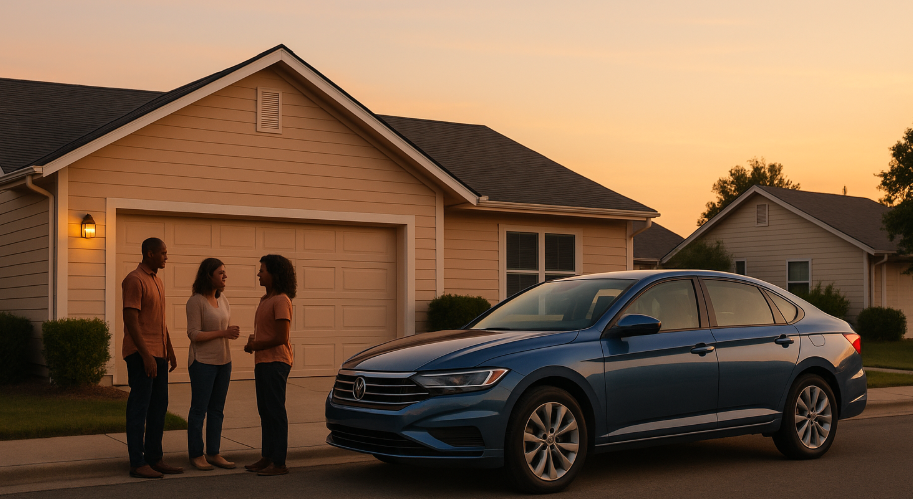If you’re heading into 2026 determined to simplify your budget and make cleaner choices, your auto insurance is a great place to start. A policy isn’t just a piece of paper you buy and ignore; it’s a financial safety net and a nudge toward safer, lower-stress habits. With work patterns shifting, cars lasting longer, and technology reshaping how risk is priced, you can build coverage that’s fair, transparent, and mindful—without compromising protection.
What’s Changing for Drivers in 2026
Hybrid mileage is the new normal. Many people now drive in bursts—weekday errands and weekend trips—with fewer long commutes. Insurance that prices fairly for light or variable mileage can better match what you actually use.
Repairs are smarter—and pricier. Advanced driver-assistance systems (ADAS) reduce crash severity, but sensors and calibration make repairs costlier. The right coverage limits (and realistic deductibles) matter more when a minor bump can involve cameras, radar, or LiDAR.
Climate and claims volatility remain wild cards. Storm-related losses keep shaping premiums in many places. That doesn’t mean panic; it means keeping core protections strong and trimming waste where it doesn’t hurt your resilience.
Bottom line for 2026: you’ll save the most by aligning your policy with how you really drive and by avoiding false economies (like rock-bottom liability limits) that can backfire after a single bad day.
Pricing Models That Reward Clean Choices
Traditional rating assumes “average” mileage and spreads risk across broad categories. In 2026, you can choose from models that better reflect your habits:
- Standard rating: Familiar and predictable; discounts for safe records, bundling, paid-in-full, and anti-theft.
- Telematics/UBI (usage-based): Voluntary tracking of braking, speed, and time of day to earn ongoing discounts.
- Miles-based (pay-per-mile): A modest base rate plus a per-mile charge—ideal if your odometer barely moves.
If you’re a light driver, keep an open mind about pay-per-mile programs. They preserve full coverage options while making your premium proportional to use. For a clear, consumer-friendly explainer that outlines how billing works, who tends to save, and potential caveats, see this guide to pay-per-mile auto insurance.
When pay-per-mile makes sense in 2026
- You drive under ~8,000–10,000 miles/year or mostly take transit/bike.
- You keep a second vehicle for occasional use.
- Your schedule is hybrid or seasonal, with long stretches of low mileage.
Bonus: paying for what you use often inspires gentler habits and fewer car trips—good for your nerves, your neighborhood, and the planet.
Build a 2026-Ready Coverage Stack (Clean, Not Bare-Bones)
Think of your policy like a pantry you stock intentionally—no clutter, nothing missing. Here’s how to right-size it:
- Liability (BI/PD): Protects others if you’re at fault. State/provincial minimums are rarely enough for real accidents. If you can, choose higher limits (e.g., $100k/$300k bodily injury and $100k property damage or more) to safeguard future income.
- Uninsured/Underinsured Motorist (UM/UIM): Crucial where many drivers carry low limits. It protects you and your passengers if the other driver can’t pay.
- Comprehensive & Collision: Keep these if replacing your car out-of-pocket would hurt. Consider nudging deductibles higher only if you can comfortably self-insure the difference.
- Medical Payments/PIP: Helps with medical costs regardless of fault; requirements vary—learn your local rules.
- Add-ons to consider sparingly: Roadside assistance (handy if you road-trip), rental reimbursement (vital when you need daily transportation), and gap coverage (important for new loans/leases with fast depreciation).
Clean-choice principle: Cut waste, not resilience. Lean coverage should still protect your health, income, and mobility after a bad day.
Nine Practical Moves to Lower Your Premium in 2026
- Audit your current policy. List every coverage, limit, deductible, discount, and rated driver. Correct mileage estimates and garaging details that quietly drifted.
- Bundle wisely. Auto + renters/home can deliver meaningful savings. Still compare the bundle against separate carriers to confirm the discount is real.
- Shop early and consistently. Re-quote 30–45 days before renewal and after life changes (move, job, new car/driver). Keep limits identical across quotes to compare apples to apples.
- Practice deductible discipline. Raising comp/collision deductibles (e.g., $500 → $1,000) can help—only if your emergency fund covers it today.
- Trim unneeded add-ons. Remove duplicative towing/rental benefits if your credit card, membership, or manufacturer already covers them.
- Stack legitimate discounts. Defensive driving courses, good-student status, paperless billing, telematics opt-ins, anti-theft devices, and paid-in-full can all add up.
- Right-size vehicle usage. If you own a spare car, talk to your insurer about rated drivers, seasonal mileage, and whether pay-per-mile or storage status (where allowed) makes sense.
- Keep your record clean. Minor violations fade with time; ask about accident-forgiveness options and how they apply in your area.
- Mind repair realities. If your car bristles with sensors, ask your agent how ADAS calibrations affect glass and collision claims. A slightly higher deductible might be offset by better limits where you need them most.
Don’t Get Tripped Up by “Low Down Payment” Marketing
As you comparison-shop in 2026, you’ll see “$0 down today!” ads. Sometimes they’re legitimate budget helpers; sometimes the price gets shifted into higher monthly payments, per-installment fees, or stricter cancellation terms. Before you click “buy now,” slow down and check:
- Is the monthly cost higher than a standard plan with a normal down payment?
- What are the policy/setup fees? Are they refundable if you cancel mid-term?
- How tight is the grace period? One late payment shouldn’t trigger instant cancellation.
- Did the quote quietly shave core protection (like UM/UIM) to hit a low upfront number?
- Any telematics or mileage requirements you must meet to keep the advertised price?
For a clear, consumer-first walkthrough that separates genuine flexibility from gimmicks, read this breakdown of low down payment car insurance deals and the trade-offs to watch.
The Clean-Choice Scorecard for 2026
Use this quick checklist before you bind a policy:
- Protection first: Liability limits that reflect real medical/repair costs, not just legal minimums.
- Mirror your reality: Pick standard, telematics, or pay-per-mile based on actual driving.
- Deductibles you can handle: Never set one you couldn’t pay tomorrow.
- No zombie add-ons: Keep only the extras you’ll truly use.
- Fee awareness: Understand installment, setup, and cancellation terms up front.
- Annual re-quote: Prices move; your life changes. Re-shop once a year to stay honest.
- Kinder driving, cleaner life: Gentle habits reduce risk, stress, emissions—and premiums.
Final Word for a Calmer 2026
A confident auto insurance choice is like a tidy closet: everything you need, nothing you don’t. As 2026 begins, align your policy with your mileage, keep core protections strong, and choose a pricing model that rewards how you live—whether that’s a standard plan with smart discounts, a telematics program that recognizes safe habits, or a fair pay-per-mile option. Start your quotes early, compare identical limits, and make one intentional improvement at renewal. That’s how you protect your future self—and keep your finances, and your driving, clean.






